🤖 Tech Talk: Big tech continues to woo India: After Google and Perplexity Pro, OpenAI gives users ChatGPT Go
Plus: AI browsers, generative video figure among top 5 AI predictions; Why most AI pilots fail: MIT Nanda report; AI Tool of the Week: How to create effective learning simulations using GPT-5?
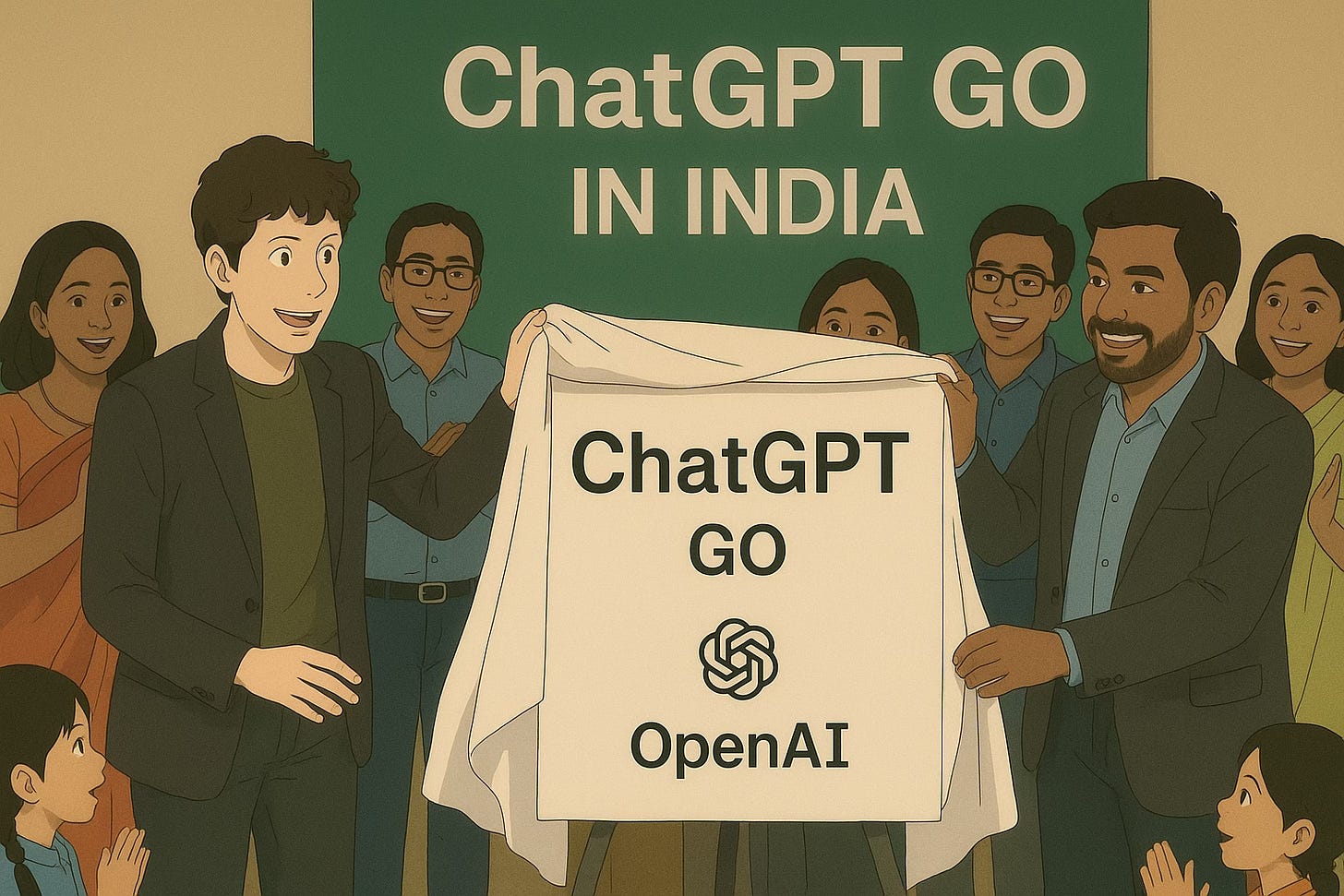
Dear reader,
Big Tech is pulling out all the stops to win over millions of Indian users as China grows increasingly inaccessible and wary of US firms. Last month, for instance, Google rolled out its AI Mode in Search to everyone in India without the need for a Labs sign-up. Powered by a custom version of Gemini 2.5, the feature that handles longer, more nuanced questions that once required multiple searches is now available via a dedicated tab or directly in Google app’s search bar.
On 1 August, Aravind Srinivas-led Perplexity AI announced it would give Airtel’s 360 million mobile, WiFi, and DTH subscribers free access to Perplexity Pro, a service worth ₹17,000 a year. The offer also helped Perplexity better its ranking on the Apple App Store. On its part, Airtel is now also giving Apple Music free to its subscribers.
Not to be outdone, OpenAI has rolled out ChatGPT Go, its most affordable subscription plan yet — only for India as of now. Further, users in India can now pay in rupees via the widely used Unified Payments Interface (UPI). On 19 August, Nick Turley, VP and head of ChatGPT, posted on X: "We just launched ChatGPT Go in India, a new subscription tier that gives users in India more access to our most popular features: 10x higher message limits, 10x more image generations, 10x more file uploads, and 2x longer memory compared with our free tier. All for Rs. 399...."
While OpenAI hasn’t revealed exact user numbers, CEO Sam Altman said at GPT-5’s launch on 7 August that India is its “second-largest market after the US, and it may well become our largest.” Globally, ChatGPT has surpassed 700 million weekly users, most on the free tier. India alone accounted for 21% of the 2.2 billion AI app downloads worldwide in the first eight months of 2024, making it the top market for mobile-based AI apps, according to Sensor Tower.
That surge comes despite OpenAI’s recent turbulence. The release of GPT-5 — billed as its most advanced model with sharper reasoning and stronger safeguards — was clouded by criticism. Users complained the model felt too brief, cold, and detached compared with earlier versions, fueling speculation that OpenAI had stripped out warmer responses to save costs. (Polite phrases like “please” or empathetic remarks consume extra tokens, driving up compute expenses at scale.) OpenAI has since pushed back, saying GPT-5 is being refined to sound “warmer and friendlier” after feedback that it felt overly formal. The company insists the tweaks are subtle but designed to make ChatGPT feel “more approachable".
AI browsers, generative video figure among top 5 AI predictions
Here are the top five predictions from the State of AI 2025 report published by Bessemer Venture Partners this month.
1. The browser will emerge as a dominant interface for agentic AI
In July, I pointed out that the rise of AI-powered browsers and autonomous AI agents signals a deeper shift. By 2030, traditional browsing may give way to an agent-driven internet, where AI handles most of the searching, filtering, and decision-making for us. Legacy browsers like Chrome and Firefox now face competition from AI-first challengers like Perplexity’s Comet, the Dia browser, Brave Leo, and OpenAI’s upcoming AI browser.
These Chromium-based AI browsers are built on Google’s open-source engine—the same core that powers Chrome — but they layer on AI capabilities. They can summarize pages, answer questions, and automate searches using models like ChatGPT or Claude. This shift threatens one of the internet’s most lucrative business models: search advertising — a domain where Google traditionally has excelled.
The Bessemer report corroborates that as agentic AI (where AI agents can autonomously take action on behalf of users) evolves, the browser is emerging as a potential environment for autonomous execution — not just a tool for navigation, but a programmable interface to the entire digital world. The VC firm expects to see new AI-native browsers from OpenAI, Google, and others. It says that the "...browser’s ubiquity, flexibility, and integration depth make it the most capable — and inevitable — interface layer for agentic AI across both B2B and B2C use cases".
2. Next year will be the year of generative video
As per Bessemer, generative video is on the cusp of mainstream adoption in 2026, following image’s breakout in 2024 and voice’s rise in 2025. It points out that with rapid improvements in realism, controllability, and accessibility, frontier models like Google’s Veo 3, OpenAI’s Sora, and Moonvalley’s Marey are making video commercially viable at scale. Use cases span entertainment, marketing, education, social media, and retail, while startups are emerging around cinematic storytelling, avatars, livestreaming, and personalized content. According to the report, market structure remains fluid: big labs set benchmarks, but players like Higgsfield show applications can thrive atop existing models, while open-source challengers such as Qwen (Alibaba) are gaining ground despite high training costs. Real-time, low-latency video is another promising frontier. Yet challenges loom — particularly around copyright, licensing, and responsible training data use.
3. Evals and data lineage will become a critical catalyst for AI product development
Bessemer believes that one of the biggest challenges in enterprise AI today is evaluation — knowing whether a model, feature, or algorithm is actually working in the real world. Public benchmarks like MMLU or HumanEval give only rough signals and rarely reflect the complexity of real workflows, compliance needs, or mission-critical decisions. That’s why 2025–2026 is expected to mark a shift: AI evaluations will become private, grounded in business use cases, and trusted—unlocking far wider deployment, as per the Bessemer report.
Enterprises don’t just want performance; they want confidence. This requires evaluation frameworks tailored to their own data, users, and risk environments. Companies are already moving from chasing leaderboard scores to building internal eval suites that test AI across tasks like customer support, document parsing, or sensitive decision-making. Startups such as Braintrust, LangChain, Bigspin.ai, and Judgment Labs are leading this new infrastructure wave, offering tools for benchmarking, feedback loops, and stress testing, according to Bessemer.
4. A new AI-native social media giant could emerge
The next social media giant is still undefined, according to Bessemer, but AI is likely to play a central role. It could be a platform where AI agents quietly manage our digital lives — remembering birthdays, flagging important updates, or surfacing local events — helping people stay connected both online and offline. Or it might be worlds dominated by AI influencers and clones, with platforms like Character.AI and Replika already showing how social spaces can center on AI rather than humans.
Advances in voice interaction, long-term memory, and generative image and video are accelerating this shift, providing the building blocks for more immersive, personalized, and persistent social experiences. The next big platform could debut with mass appeal or grow organically from a niche community before scaling into a global ecosystem. However it arrives, the future of social media will likely blur the line between human and AI presence more than ever before.
5. The incumbents strike back as AI M&A increases
As per the Bessemer report, after two years of AI-native disruption, enterprise giants are striking back through acquisitions rather than reinvention. In 2025-26, mergers and acquisitions (M&A) activity is set to surge as incumbents buy their way into the AI era. Vertical software is the sharpest battleground. Startups are embedding AI into industry workflows — automating insurance claims, legal briefs, and healthcare billing — forcing legacy SaaS (software-as-a-service) players to evolve or fade. For many, acquisition is the fastest route. This shift goes beyond bolted-on features: vertical AI is blurring software and service, turning tools into intelligent providers that redefine value.
Infrastructure is also in play, with demand for orchestration, evaluation, observability, and memory driving strategic buys. For founders, this means inbound interest if they have strong moats, traction, and embedded workflows. For investors, consolidation validates the thesis: AI-native startups set the standard, and incumbents are confirming it with their wallets. The second act of AI disruption belongs to giants suiting up.
Why most AI pilots fail: MIT Nanda report
A new MIT NANDA report reveals that just 5% of enterprise generative AI pilot projects achieve rapid revenue growth, with most failing to show measurable impact. The study titled 'The GenAI Divide: State of AI in Business 2025' was based on 300 deployments, 150 leader interviews, and 350 employee surveys.
Highlighting the “learning gap” in how businesses adopt AI, the report notes that companies often overspend on sales and marketing tools, while the highest returns emerge from back-office automation. Startups led by younger founders succeed more often by targeting a single problem and forging strong partnerships. Purchased tools and collaborations delivered a 67% success rate, far higher than in-house development.
Workforce shifts are subtle, mainly from not filling vacated support roles. Lead author of the report, Aditya Challapally, told Fortune that firms with clear, narrow AI strategies fare best, whereas rushed adoption leads to disappointment. The report stresses that success depends on careful planning, employee training, and integration—not just tool acquisition.
AI Unlocked
by AI&Beyond, with Jaspreet Bindra and Anuj Magazine
The AI we unlocked today is based on a tool — Google Storybook in Gemini.
What's the problem here? A lot has been written about how GPT-5's release could not live up to the expectations. While OpenAI addresses some of the issues, GPT-5 already has some hidden, impressive capabilities- one of which is to create animated learning simulations. Traditional educational content often fails to engage learners effectively, leading to poor retention and understanding. Static text and images cannot capture complex processes or demonstrate how concepts evolve over time, making it difficult for learners to grasp dynamic relationships and sequential processes. GPT-5's Canvas tool directly addresses this by automatically generating both structured explanations and synchronized SVG animations that bring concepts to life, creating an immersive learning experience that adapts to the learner's needs.
How to access: Available through GPT-5 and Canvas tool enabled
GPT-5's Canvas tool can help you:
- Create interactive learning experiences: Transform abstract concepts into visual, animated demonstrations
- Build step-by-step educational content: Break down complex topics into digestible, sequential learning modules
- Generate custom SVG animations: Automatically create visual representations that show processes in motion
Example:
Suppose you want to learn about photosynthesis. Here's how Canvas can create an effective learning simulation:
- nput the Prompt: Use this exact prompt: "I would like to understand the concept of <enter the topic you want to learn> in a clear and structured way. Break down the explanation into logical steps or components, using simple language that builds from the basics to more advanced ideas. In addition to the explanation, Create a SVG animation that visually represents how the concept works or evolves over time. Make sure the explanation and SVG is beginner friendly."
- Canvas Activation: GPT-5 automatically opens Canvas tool and creates a structured explanation alongside an animated SVG. (if it does not open Canvas tool, select ‘+’ on prompt box and select ‘Canvas’ before running the prompt)
- Run Code: After the SVG code is written, select ‘Run Code’ from top right and check the SVG in action.
- Refine and Customize: Edit the explanation or request animation modifications directly in Canvas.
What makes this special?
- Dual-mode learning: Combines textual explanation with visual animation for better comprehension.
- Real-time editing: Modify both content and animations instantly within Canvas.
- Beginner-friendly focus: Automatically adapts complexity level for accessibility.
Note: The tools and analysis featured in this section demonstrated clear value based on our internal testing. Our recommendations are entirely independent and not influenced by the tool creators.
You may also want to read
Generative AI set to improve banking operations in India by 46%: RBI Report
Generative Artificial Intelligence (AI) has the potential to improve banking operations in India by up to 46 per cent, according to a report by the Reserve Bank of India (RBI)
AI tool SabhaSaar brings multilingual meeting minutes to Panchayats
On Independence Day, the Ministry of Panchayati Raj launched SabhaSaar--an AI-powered tool that automatically generates structured minutes of meetings from Gram Sabha and Panchayat audio or video recordings. Using AI and natural language processing (NLP), it transcribes discussions, highlights key decisions and action points, and produces well-formatted records. Integrated with Bhashini, it currently supports 13 Indian languages, with plans to expand further, making the tool more inclusive and accessible for Panchayat functionaries.
Is the AI Winter Finally Upon Us?
The tepid reception of GPT-5 and the selloff of CoreWeave could be an inflection point — or a bump in the road.
The AI Clones Are Coming! But It’s Not All Bad
Influencers and physiotherapists are creating digital second selves.
Setback for Elon Musk? Co-founder Igor Babuschkin exits to start own AI venture
Hope you folks have a great weekend, and your feedback will be much appreciated — just reply to this mail, and I’ll respond.
Edited by Madhumita Sen Choudhury. Produced by Shashwat Mohanty.


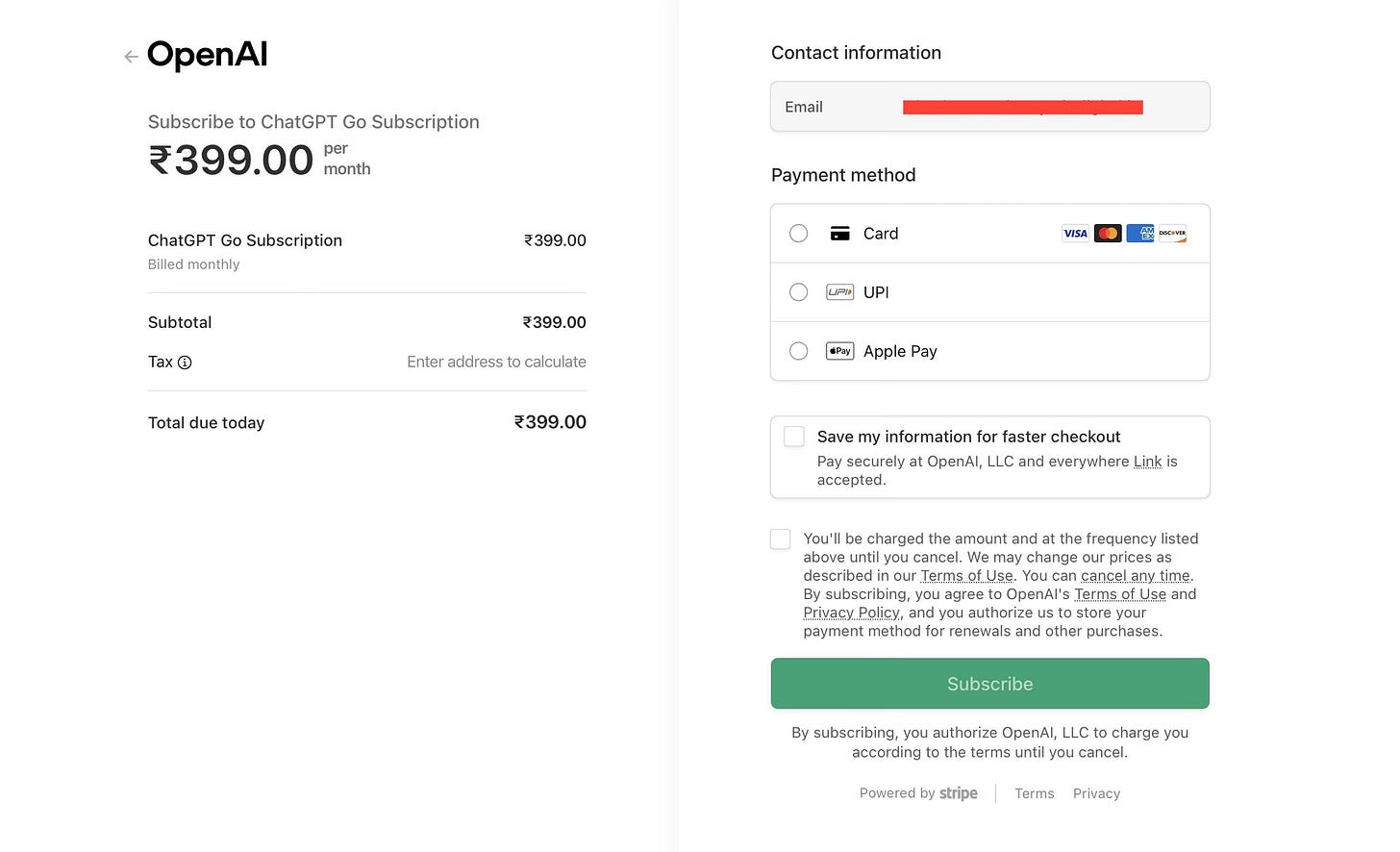
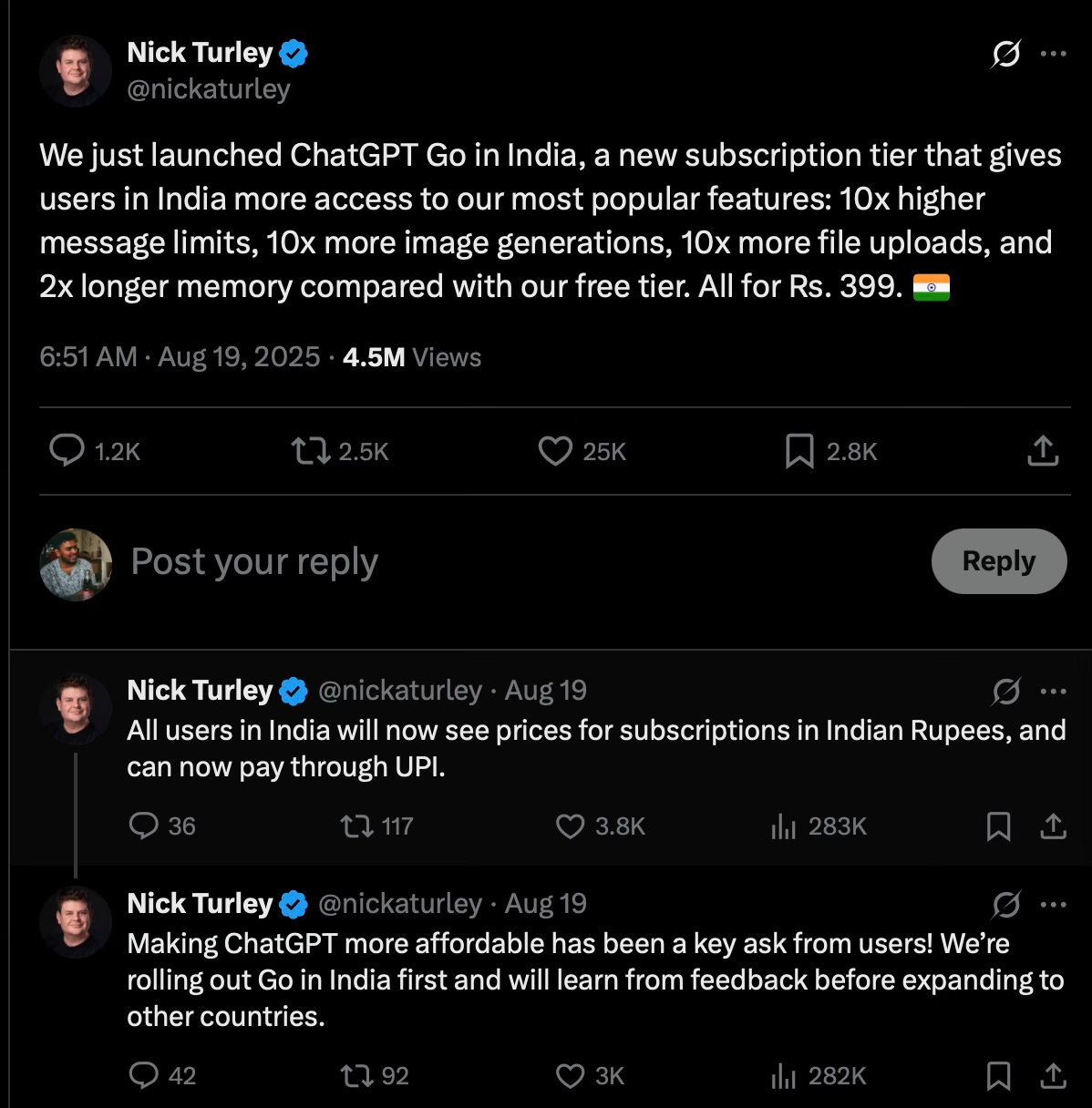
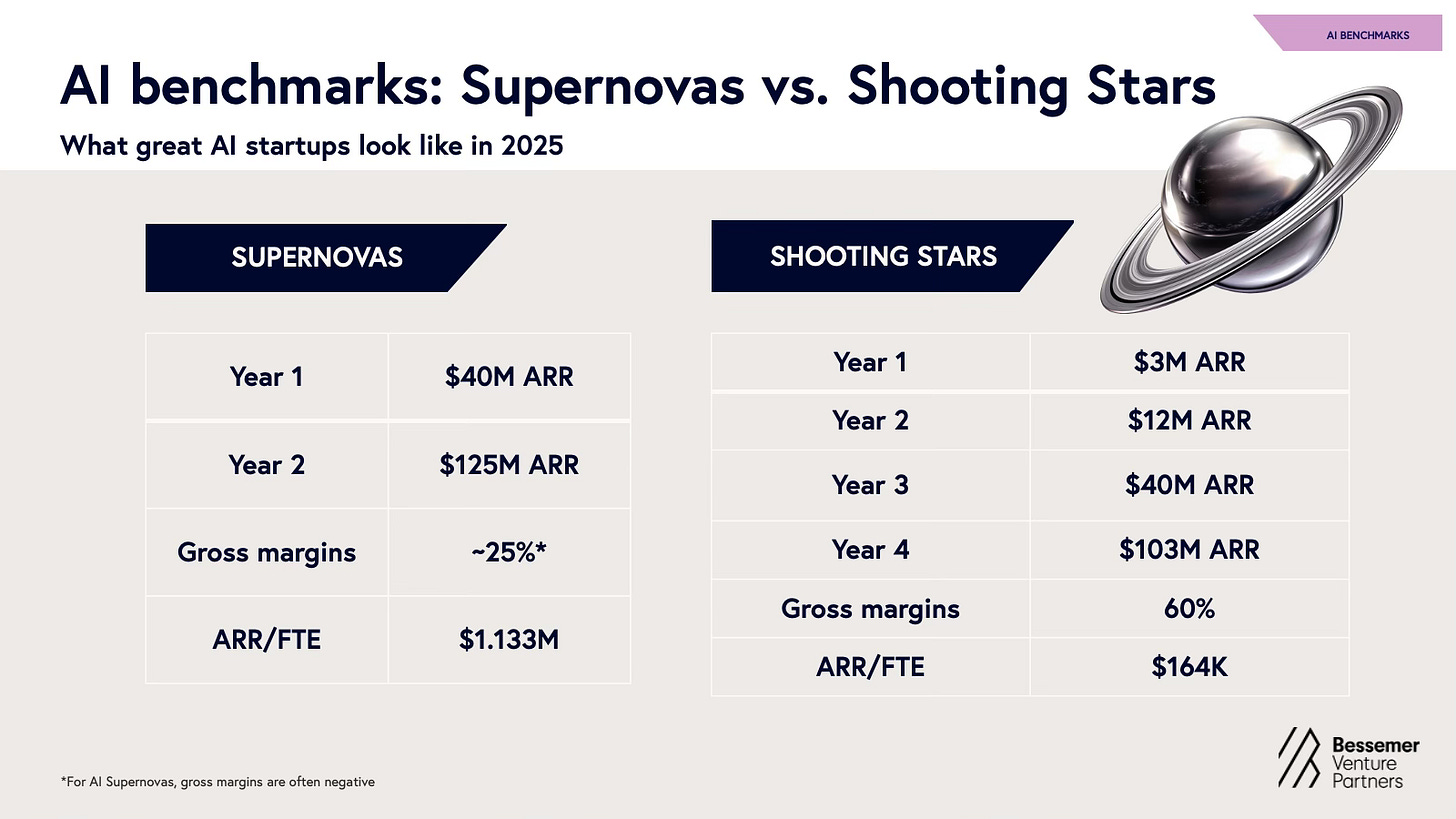
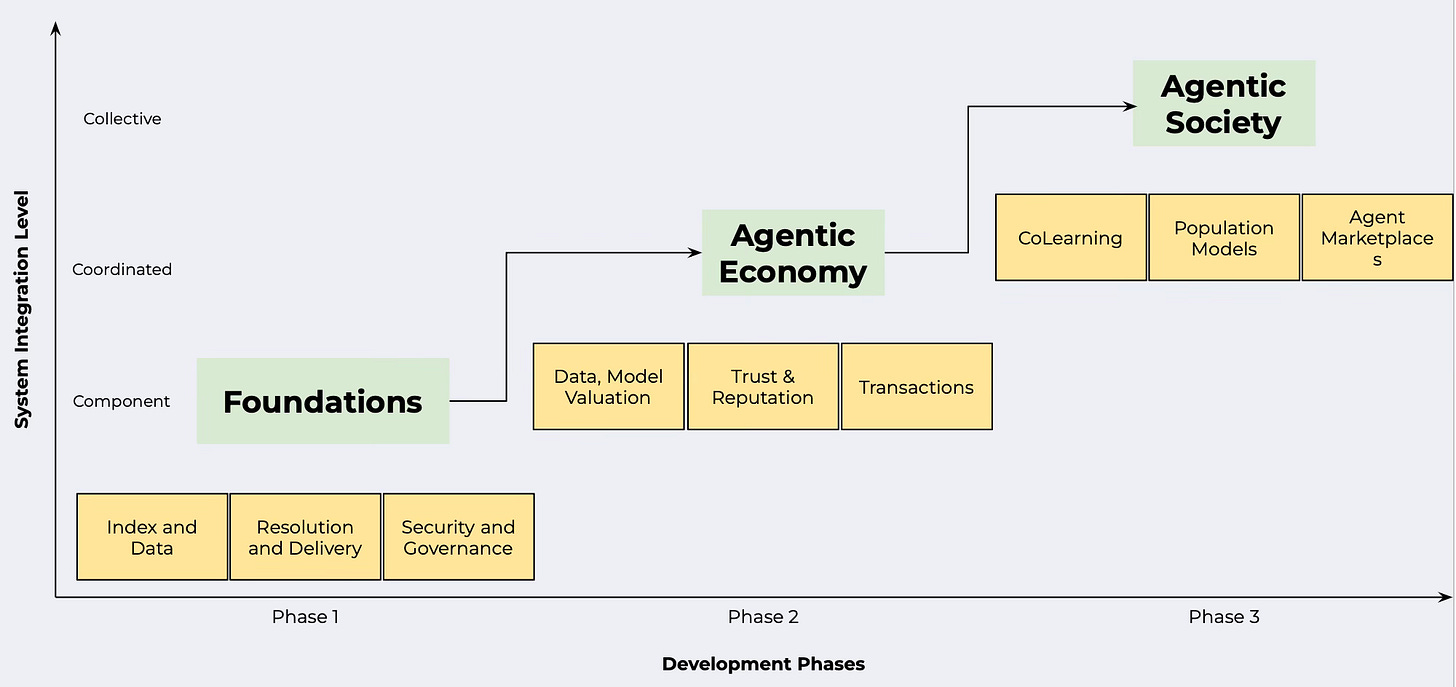

Why is India such a hot spot right now for tech? Is it the need to increase engagement?